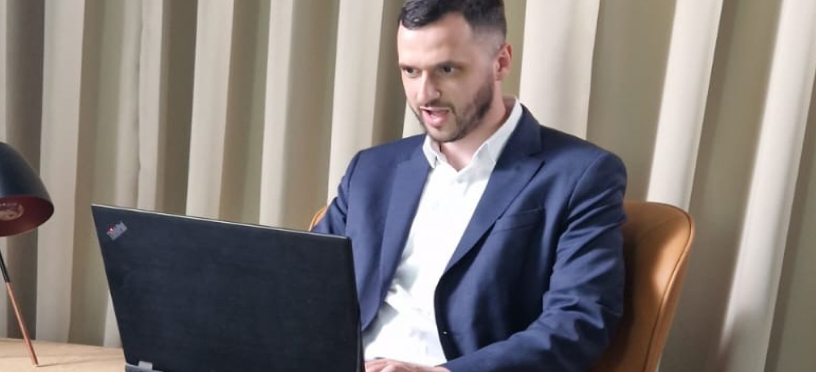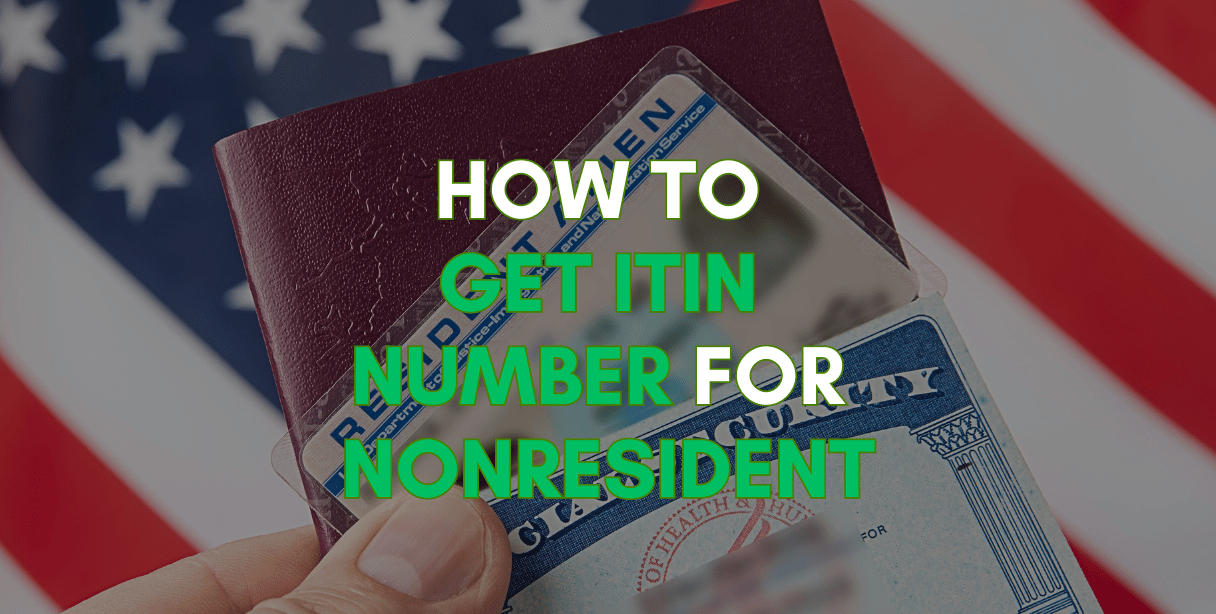Physical Presence Test for US Expats: Guide and Examples
The most recent estimates show that there are a bit more than 5 million US citizens living abroad. Almost 4 million are civilians, while the rest are US service members and other government officials. Although they all might be living in different countries, they have something in common (apart from being US citizens and that is — they all have to file 1040 tax forms each year. And, because US taxes are based on citizenship and not a specific location or place of living, to get certain tax exclusions, these US expats have to pass the Physical Presence Test if they want to get foreign income exemptions.
If you are one of them and want to learn all there is to know about the physical presence test, you’re in the right place. In this article, we’ll share with you the main requirements for the physical presence test, talk about exemptions to the rule, and give you some real-life examples to help make things easier to understand.
Let’s start!
What Is the Physical Presence Test?
The Physical Presence Test (PPT) is a test that shows the Internal Revenue Service (IRS) whether a US citizen or a Green Card Holder can claim the foreign earned income exclusion on their taxes. Similarly to the Substantial Presence Test, PPT focuses on days of presence. But instead of looking at nonresident aliens and the number of days they’ve spent in the US, the latter mostly looks at US citizens and the number of days they’ve spent in a foreign country (or outside of the US).
To pass the PPT test, you need to be in a foreign country (or countries) for 330 days during a period of 12 consecutive months. This means that if you want to get the foreign earned income exclusion, you can’t be on US soil for more than 35 full days in a span of a single year. A full day (or day of presence) is counted as a full 24-hour period that starts at midnight each day. To get the foreign-earned income exemption, you must pass the Physical Presence Test for each year you file taxes.
Physical Presence Test: A Deep Dive
The US is the only country that taxes its citizens (and resident aliens) on their worldwide income. They all need to file the 1040 tax form, and if they are Expats and pass the Physical Presence Test, they can get an exemption from paying a certain portion of taxes on their foreign-earned income.
If you’re one of them, you can get a full tax exemption of $126,500 for the tax year 2024. The specific amount for full tax exemption is adjusted for inflation each year by the IRS. For example, for the tax year 2023, the amount of foreign earned income you can get tax exemptions was $120,000. But, before you can get the tax exclusion, you must pass the Physical Presence Test.
How Does the IRS Verify Physical Presence Test?
Counting the number of days for the Physical Presence Test is quite simple. To pass the test, you can’t have more than 35 days of presence in the US during a 365-day period. A “full day” starts at midnight and lasts for 24 hours. This means that if you enter the US soil at 3 PM, that day won’t count as a full day, and it won’t be a part of your physical presence calculation. Additionally, days that you spent in international waters won’t count towards those 35 days per 12 months.
The tricky part is that the same full-day calculation applies to the days you’ve spent in a foreign country. This means that if you arrive in any foreign country at, let’s say, again, 3 PM, that day won’t be counted towards the 330 days you need to pass the Physical Presence Test.
Also, any period spent in the US while in transit between two locations, if it’s less than 24 hours, won’t count as a day of presence.
How to Check Days of Presence for Physical Presence Test?
To pass the Physical Presence Test and get the foreign earned income exclusion on your taxes, you can’t have more than 35 days of presence in the US in the span of 12 months. Days of presence are 24-hour periods that start every day at midnight and end after the 24 hours have passed. To have a day count as a “day of presence,” you must spend 24 hours (from midnight) on US soil.
You can check your days of presence in the US in several different ways. You can do it by checking your email, looking at the dates on your plane tickets, or going through your passport to see the exact times of your arrival to the States. It’s important to mention that all those methods are prone to errors and can take up quite a bit of time. The method we’ve found works best and is the most accurate is checking your travel history via the I-94 form. The whole process can be done online on the US CBP main page, and all you need for it are some basic information, such as:
- Your full name
- Your date of birth
- Your country of citizenship
- The number of your passport
Physical Presence Test: Exemptions
Like with most things in life, the Physical Presence Test also has certain exceptions to the rule. They include:
- People who are on foreign soil and are violating US laws. The IRS won’t tax any income they earn, and any days they spend in a foreign country won’t count towards the Physical Presence Test.
- The time requirement to get a foreign income exemption (330 days) can be changed or completely waived if a US citizen has to leave a foreign country due to special or unforeseen circumstances that can affect their safety (e.g., war, unrest, disease outbreak, natural disasters, etc.)
- US government officials or service members serving in foreign countries are exempt from the Physical Presence Test (e.g., soldiers in military bases, diplomats, ambassadors, administrative staff working in embassies, etc).
Physical Presence Test: Examples
To make everything as clear as possible and to ensure you fully understand the Physical Presence test, we’ve decided to share with you a couple of real-life examples.
Physical Presence Example 1
In 2022, Jason signed a five-year work contract with a company in France. He moved to France on April 1, 2022. On September 25, Jason went back to the States to have several business meetings and stayed there until October 10, 2022, when he returned to France.
The total amount of time Jason spent in the US between his leaving the country on April 1, 2022, and the 365-day period to April 1, 2023, was 14 full days (or 14 days of presence). The first and last day of his visit to the US did not count for his days of presence calculation as he didn’t spend the entire 24 hours of the day (beginning at midnight) in the country. With some simple math, we can calculate Jason’s Physical Presence:
365 – 14 = 351
Because Jason spent 351 days in a consecutive 12-month period on foreign soil (or outside of the US), he meets the Physical Presence Test requirements. He is eligible to get a foreign income tax exemption on the money he made in France between April 2022 and April 2023. The income he made in the US before April 2022 is going to be taxed normally as he was still living in the States.
Physical Presence Example 2
Olivia moved to Ireland for a job on August 20, 2022. On March 10, 2023, due to certain complications, she flew back to the US. In total, she spent 220 days in Ireland (or 218 days of presence because the first and last days were not the full 24-hour period).
To pass the Physical Presence Test and get the foreign income tax exemption, Olivia needs to have 330 days of presence in a foreign country, and she only has 218. This means that she does not fulfill the requirements set by the PPT and will be taxed on her foreign income.
Physical Presence Example 3
Jane lives in Burlington, Vermont, and travels to Montreal, Canada, for work every day. This means that every week, she crosses the border five times and goes into Canada. At the end of each day, she returns to her home in Burlington. But, because she never spends the entire 24-hour period (from midnight) in Canada, the days she is in Montreal don’t count towards the 330 days of presence she needs to get tax exemptions. She does not pass the Physical Presence Test and has to pay taxes on the full amount she makes in Canada.
What Tax Forms Do US Expats File?
Depending on their specific circumstances, US expats have to file different tax forms each year, which can include:
- Individual tax return Form 1040 that US expats use to file their worldwide income
- The Foreign Earned Income Exclusion Form 2555 that Expats can use to get certain tax exemptions
- The Passive Foreign Investment Company Form 8621 that Expats who own shares in foreign investment funds need to file.
- Foreign Tax Credit Form 1116 for Expats who pay foreign taxes on their income
FAQ
What is form 8843 and who needs to file it?
Form 8843 is a tax form that specific groups of nonresident aliens (e.g., students, professional athletes, teachers) must file if they are present on US soil. This form can give those groups tax exemptions and can help explain their specific circumstances and reasons for their days of presence in the US, which can be used to determine their tax status as either nonresident or resident.
For example, students who have an F, J, M, or Q immigration status are exempt from paying foreign income taxes for five years.
What’s the difference Between 1040 and 1040NR?
The 1040 tax form is for US citizens, residents, and certain nonresident aliens who earn income inside and outside of the US. On the other hand, the 1040NR form is a tax form solely used by nonresident aliens who earn income in the US but are not considered residents for tax purposes. If you are still unsure about the differences between these two – 1040 vs 1040NR, we wrote a whole blog post about it. You will also be able to find out who files 1040NR form, and who doesn’t.







